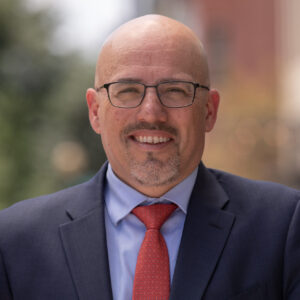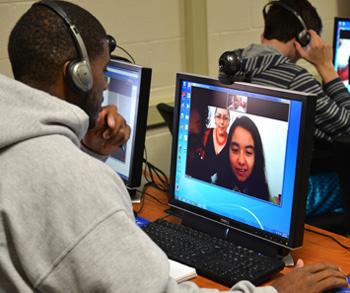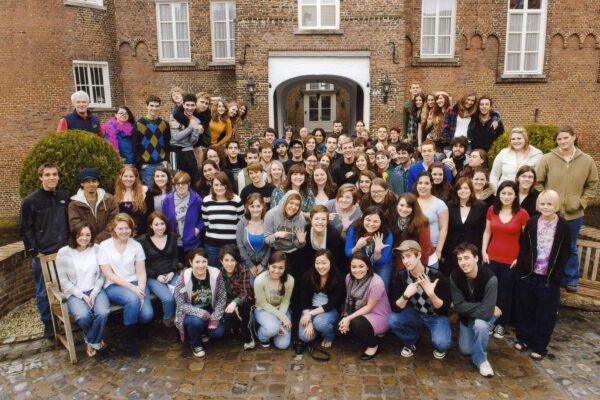By Louis Soares
As colleges and universities across the country activate their business continuity plans, campuses are closed and all but essential in-person services and administrators have moved business and teaching online.
The practices and processes outlined in those plans will be essential for navigating the next few months and, perhaps, the fall. But I can’t help thinking about what comes next for students and for these institutions. In addition to business continuity, we will need to start thinking about the function of learning across all of higher education. As I raised in a recent post, we also need to talk about learning continuity.
And more than talk, now is the time we need to start experimenting with new tools and practices—like blockchain—that hold the potential to equitably safeguard, verify, and share learning no matter where it happens. ACE’s new Education Blockchain Initiative, funded by the U.S. Department of Education, aims to seed and support greater understanding and experimentation with blockchain. The project’s first report, which began before COVID-19 but is especially timely now, will map the current state of blockchain and its specific applications to education.
It holds particular promise for two features unique to American higher education—institutional diversity and shared governance—that are enormous strengths but present challenges for creating clearer connections across how students learn, how faculty and administrators work, and the connections between college and career. Blockchain could prove a powerful tool for preserving the autonomy and richness of higher education institutions while providing clarity and consistency for learners, faculty, campus leaders, and employers.
This clarity is critical for ensuring learning continuity and for increasing economic security and mobility, which requires much more focus by higher education now and into the future.
What is blockchain?
New technologies like blockchain hold promise for greater student ownership of records and can make the transition from education to career or from one institution to another slightly easier. They also can ensure students have permanent, on-demand access to these records, no matter what happens to the record issuer.
While many may know of blockchain as the technology underpinning the cryptocurrency Bitcoin, it holds potential to support a new digital credential infrastructure that addresses many of the potential learning continuity issues exacerbated by COVID-19. Blockchain is a type of distributed ledger technology with mechanisms to ensure the information and the participants on the blockchain can be trusted, without the need for a central or third-party validator. It prevents disruption caused by a crisis or closure at any one institution, because the records are distributed rather than held on a single user’s ledger. The approach also gives individuals control over their data, or in this case learning, and provides them agency to readily share it in a verified manner.
Need for learning continuity
COVID-19 has caused tremendous dislocation for students, faculty, and institutions—making learning continuity an urgent matter. Almost overnight, higher education had to move to fully online learning. Online instruction is a new modality for many institutions, including open-access community colleges and regional comprehensives, and for many faculty members across sectors. This has raised concerns about curricular changes, instructional efficacy, student engagement, and ultimately, learning outcomes.
One of the ways colleges and universities are managing this challenge for the existing semester is by shifting from their normal grading procedures to a pass/fail option. Such policy changes are complicated by the views of students, faculty, and administrators view on how the change might affect future transactions such as transfer, graduate admissions, and employment.
Two students at UCLA recently highlighted in the Los Angeles Times illustrate the point. One is a working mother about to graduate and eager to see grading moved to pass/fail because of all the other demands on her time. As she told the paper, “I know I have the ability to get good grades, but given the circumstances I would have to work even harder than before to compete with my colleagues who don’t have to worry about a child.”
The other student, a sophomore, is taking only three classes in the upcoming quarter and wants letter grades to try to boost his GPA for law school or PhD applications down the road. Both have reasonable needs, but they are in tension—and a compromise option that allows for both is complicated, costly, and inefficient.
Instead, imagine using blockchain, aligned with smart contracts that allowed individual students to select the grading option they preferred course by course. Paradoxically, such a system would minimize the time and expense of transactions while also increasing student autonomy. Additionally, because a blockchain is not dependent on a single ledger of one party, or network node, crises and emergencies that impact the computer systems of a single institution would cause no disruption in access to student records.
This is just one powerful example. Beyond the initial, abrupt transition to universal online learning, students’ enrollment will be impacted by economic dislocation and, in the coming months and even years, we can expect more movement in and out of different institutions and higher education in general.
More students may need to take a break from their education to deal with family and health issues. Workers who have lost their jobs or seen their hours dramatically reduced will look to higher education for new ways to demonstrate and certify their existing skills and to learn new ones in order to quickly find work. Many may also have previous higher education credit that they are looking to apply toward new credentials.
It will be essential that student information and learning management systems are able to document and transmit learning information efficiently, even—or especially—during extreme circumstances when it’s more challenging than usual to obtain and share certified copies of transcripts.
For example, the challenges with sharing learning between institutions were seen in the last recession, when bachelor’s degree completion rates for students who started at community colleges declined. While not the sole reason, challenges around learning continuity—documenting, transferring, and translating not only grades and credits, but also the underlying skills and competencies—certainly played a role. With many training providers and education institutions facing an uncertain fall semester, these challenges are likely to resurface. The Statement of Principles on Acceptance of Credit recently released by ACE and a coalition of higher education associations is an important start to ensure learning continuity during this time, and we must be willing to explore more permanent and lasting solutions.
Ongoing experiments with blockchain
While blockchain may be relatively new to education, innovation is already beginning to harness this technology to better document, verify, and share data about learning.
The Dallas Community College District has partnered with GreenLight Credentials to use blockchain to give students lifelong ownership of and access to their learning records. It also allows students to easily share their credentials with employers, creating a quicker and more equitable process for vetting learning. Arizona State University’s Trusted Learner Network has piloted a private permissioned Hyperledger Sawtooth blockchain provided by Salesforce to enable reverse transfer, allowing ASU students who transferred from a community college to earn associate degrees in real time. And the credentialing power of blockchain is already taking form through Blockcerts, an open-source framework that issues secure, verifiable, and shareable credentials to blockchain along with digital wallet applications, allowing learners to store and access their records.
We must continue to test out new tools and systems like this, which allow us to codify, store, and share information about learning in new and hopefully more efficient and effective ways. To kick off our new project, we did extensive research on the current state of blockchain and its specific applications to education. Our forthcoming paper also outlines findings focused on personal data agency and privacy, lifelong learning, and the power of stakeholder ecosystems.
As the report acknowledges, there are a number of challenges as we begin to experiment more intentionally with blockchain and other technologies that can improve and increase learning continuity. But this moment—and the longer-term trends in higher education—call for creativity and experimentation.
Blockchain is just one way we can ensure that all students have control over their learning records and that their learning is counted, preserved, and shared in ways that better enable continuous learning and economic mobility. But it is a particularly promising one, and it is worthy of our time and attention.
If you have any questions or comments about this blog post, please contact us.



